Where was Jesus Crucified? (And Can You Still Visit the Location?)

Written by Joshua Schachterle, Ph.D
Author | Professor | Scholar
Author | Professor | BE Contributor
Verified! See our editorial guidelines
Verified! See our guidelines
Date written: March 29th, 2024
Disclaimer: The views and opinions expressed in this article belong to the author and do not necessarily match my own. - Dr. Bart D. Ehrman
When asking the question, “where was Jesus crucified?” a historian’s first task is to determine the likelihood that Jesus really was crucified.
In A Brief Introduction to the New Testament, Bart Ehrman writes that “the most certain element of the tradition about Jesus is that he was crucified on the orders of the Roman prefect of Judea, Pontius Pilate.” In other words, this is one element of the story of Jesus in the Gospels that virtually all scholars agree truly happened.
Ehrman goes on to note that Jesus’ crucifixion is also attested in multiple sources outside the Gospels. Additionally, the criterion of embarrassment, which says that a story is likely to be historically true if it could bring embarrassment to the author or subject of the story, makes it highly unlikely that followers of Jesus would have invented this story. Not only was crucifixion reserved for lawbreakers, but it was also the most humiliating form of capital punishment under Roman law.
If the crucifixion was indeed a historical event, it must have had a definite location, somewhere that we could theoretically pinpoint today. So where was Jesus crucified? Was he crucified on a mountain? What information can we get about this question from the Gospels? And what can archeology tell us about this place?
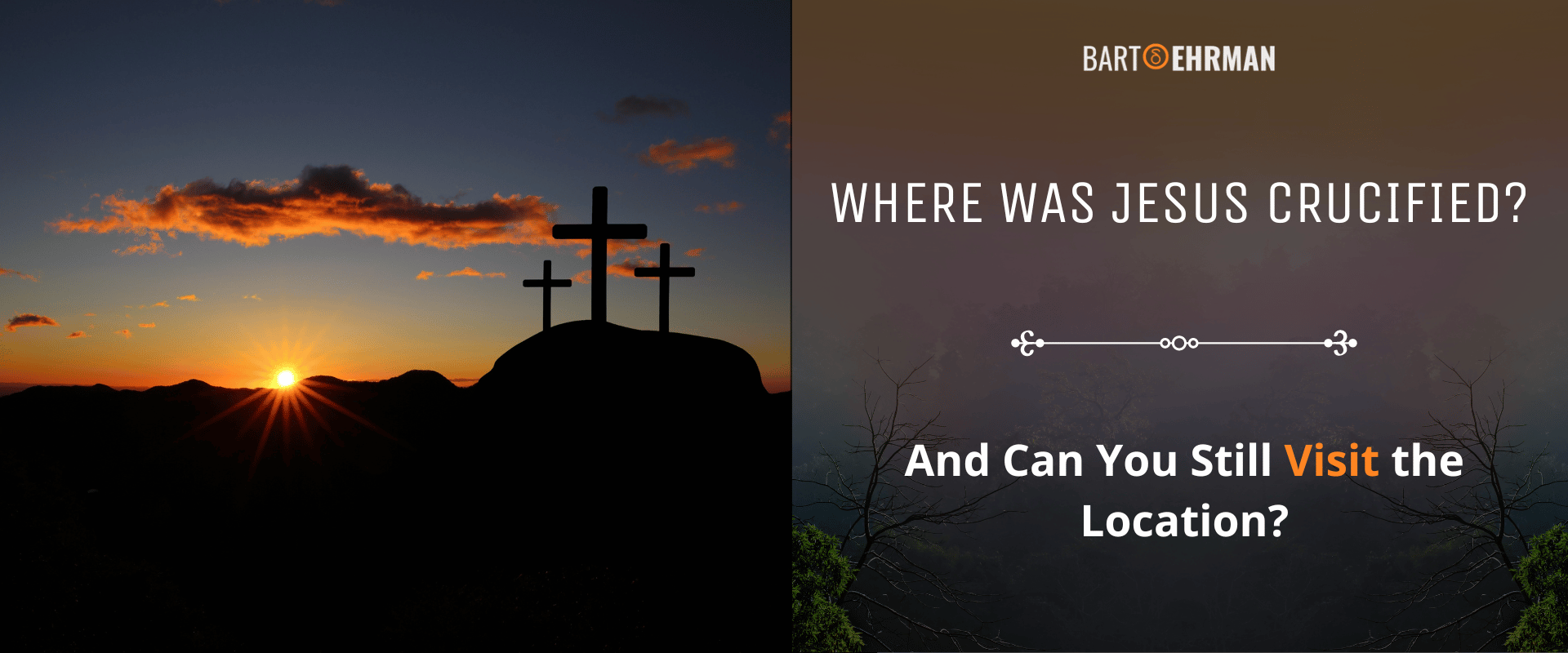
Where Was Jesus Crucified? Events Leading up to the Crucifixion in the Gospels
The Gospels provide many details about Jesus’ tortuous death. However, in this article, I’m looking specifically for those details which might give us an indication of where the crucifixion happened.
To begin with, all four canonical Gospels agree that the crucifixion happened in or around Jerusalem. In the Synoptic Gospels, Jesus and his disciples had come to Jerusalem from Galilee for the Passover celebration. Also, all four Gospels say that Jesus was arrested in a garden, called Gethsemane in the Synoptics, which is believed to have been located at the foot of the Mount of Olives just outside the city. His trial is likewise said to have occurred in Jerusalem.
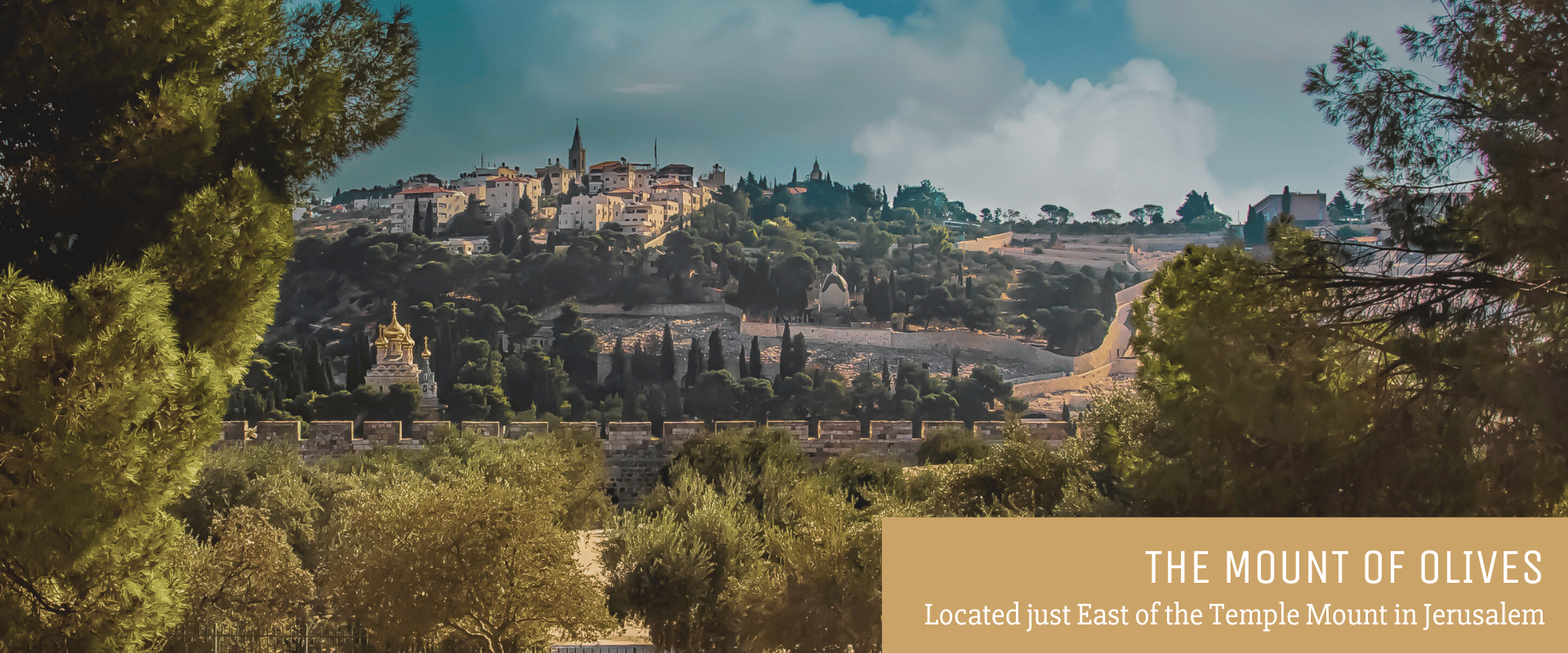
In the Gospel of John, Pilate, the Roman prefect, asks Jesus if he is “King of the Jews.” This gives us an indication of what the charge against Jesus might have been. Crucifixion was the most common mode of capital punishment for insurrectionists. If Jesus had indeed called himself King of the Jews – indicating an anti-Roman stance – or even if others had merely accused him of this, it would have been enough to incur Rome’s wrath.
After Jesus was condemned to die by Pilate, the Gospels say that he was tortured by Roman soldiers who also put a purple robe and a crown of thorns on him and mockingly pretended to worship him as a king. Then his own clothes were put back on him and he began the slow, painful march to the place of his execution.
The Synoptic Gospels also say that the soldiers compelled a man named Simon of Cyrene, a mere passerby, to carry Jesus’ cross for him. In Mark and Matthew, this happens at the outset while in Luke, Jesus starts out carrying the cross but then stumbles, prompting the soldiers to enlist Simon to help him. In the Gospel of John, however, Jesus carries his own cross all the way.
The path from the Praetorium, where Jesus was condemned by Pilate, to the place of his crucifixion is now called the Via Dolorosa, literally “Path of Pain” in Latin. It was probably about half a mile long. Here is a website containing a map of the Via Dolorosa.
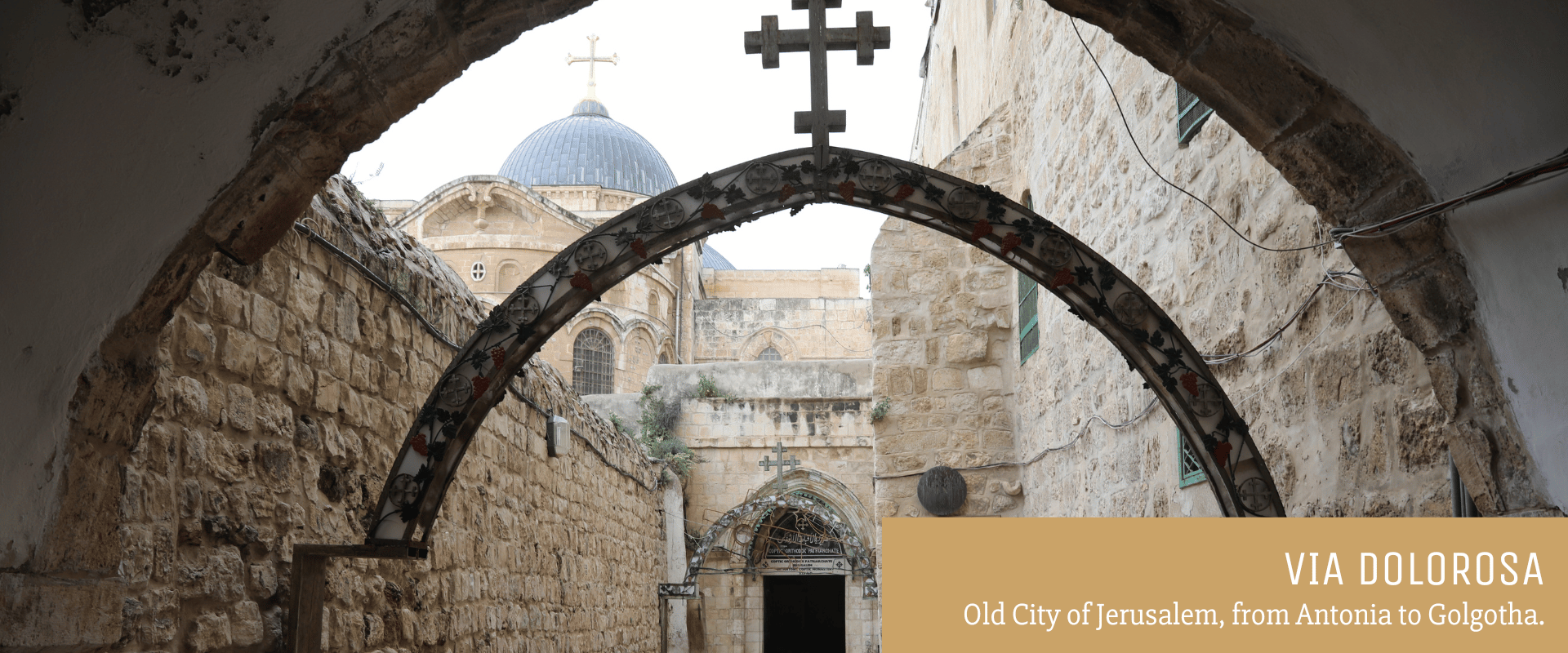
This final march was not only physically painful, carrying the heavy instrument of one’s death after being tortured, but was also part of the extreme humiliation of crucifixion, further exposing the condemned person to public shame and ridicule.
Where Was Jesus Crucified According to the Gospels?
Mark, our earliest written Gospel, has this to say about the location in 15:22: “Then they brought Jesus to the place called Golgotha (which means Place of the Skull).” The other three Gospels all agree that Golgotha was the name of the site.
“Golgotha” is a Greek rendering of the Aramaic word “gulgultā” meaning “skull”. The name “Calvary”, which is also used for the location of the crucifixion, is from the Latin “Calvaria” which also means “skull”. The name was translated into Latin by Jerome while he was translating the Bible into Latin in the late 4th and early 5th centuries.
Scholars don’t know why the place had this name although many theories have been proposed.
Some have said that if it were a common place of execution, there might have been skulls and bones lying about. Others have argued that it was a description of a rock formation upon which the place rested. James Tabor notes that “Some have speculated that the name might be related to ‘Goliath,’ based on the text of Samuel that mentions David bringing his severed head to Jerusalem (1 Samuel 17:54).”
John 19:19-20, while agreeing that the place was called Golgotha adds an important detail about the location:
Pilate also had an inscription written and put on the cross. It read, “Jesus of Nazareth, the King of the Jews.” Many of the Jews read this inscription because the place where Jesus was crucified was near the city, and it was written in Hebrew [Aramaic], in Latin, and in Greek.
From this, we can gather that the place was not within Jerusalem’s city walls but rather just outside of them, a place where passersby could see the people being crucified. This also implies that for highest visibility, it was on a hill or otherwise elevated ground, although this is never said in the Gospels.
This would make sense since the whole point of crucifixion was not merely a slow, painful death but also extreme humiliation as a deterrent to future criminals.
FREE COURSE!
WHY I AM NOT A CHRISTIAN
Raw, honest, and enlightening. Bart's story of why he deconverted from the Christian faith.
Over 6,000 enrolled!
Commemoration of Golgotha: The Church of the Holy Sepulchre
In the 4th century CE, Helena, mother of the Christian emperor Constantine, journeyed to Jerusalem on a pilgrimage, finally discovering what she believed to be the location of the crucifixion. According to church historian Eusebius, "there was a temple of Venus on the spot. This the queen [Helena] had destroyed." Legend has it that she chose the site of this pagan temple to begin excavating, subsequently finding three wooden crosses.
Helena then had a local woman who was dying brought to the site. When the woman touched the first two crosses nothing happened. But when she touched the third, she recovered instantly from her illness. Helena accordingly called this cross the True Cross, which she believed proved that it was the site of Golgotha.
She accordingly had her son the emperor build a church on the spot called the Church of the Holy Sepulchre, a form of which still exists today. Tradition says that it is both the site of the crucifixion and the tomb of Jesus.
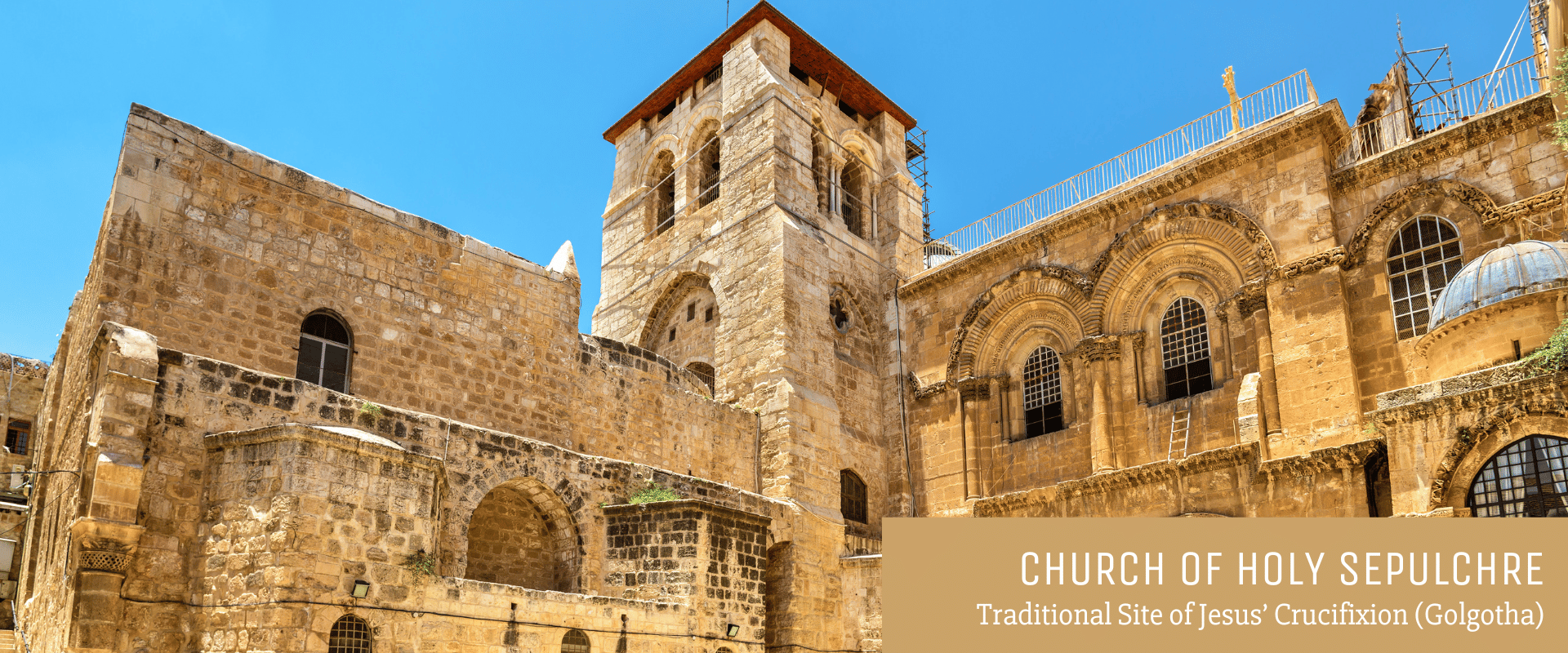
As you can imagine, this is one of the holiest sites in Christendom. Several Christian denominations share and care for the church, including the Roman Catholic, Greek Orthodox and Armenian Apostolic, as well as the Coptic, Syriac, and Ethiopian Orthodox churches.
However, only recently have archeologists discovered evidence that this may truly be the site it claims to be.
Did You Know?
While Catholic and Orthodox Christians have long revered the site of the Church of the Holy Sepulchre, some Protestants believe another site is more likely to be Golgotha. It’s often called “Gordon’s Calvary” after British general Charles Gordon who claimed to have discovered it in 1882, although it’s also called the Garden Tomb.
Gordon thought the rock formations underneath the area resembled a skull. There was also an ancient tomb found nearby.
Unfortunately, the site was eventually dated to the Iron Age, long before the time of Jesus. It could not, therefore, have been a newly-made tomb in Jesus’ time as the Gospel writers described.
What Can Archeology Tell us About the Site of Jesus’ Crucifixion?
In a 2016 article, German historian Michael Serr and German archeologist Dieter Vieweger wrote about new discoveries underneath the Church of the Holy Sepulchre. Scholars have long debated whether this was truly the site of Jesus’ death and/or burial.
It is known, both from the Gospel accounts and historians of Rome and Palestine, that sites of execution and burial were always outside the city walls. And yet the Church of the Holy Sepulchre is firmly inside the walls of the modern Old City of Jerusalem. Debates about the site’s legitimacy have often noted the fact that Jerusalem’s current Old City walls were not present in Jesus’ time.
Serr and Vieweger note that archeologists have long searched for evidence of the so-called Second Wall south of the church that would have been the northern limit of the city in Jesus’ time, thus putting the site of the church outside the city. The search had long proved fruitless, prompting some to argue that another nearby church, The Church of the Redeemer, might have been the true site of Golgotha.
Indeed, a wall was discovered underneath the Church of the Redeemer. However, Serr and Vieweger write that this could not have been the Second Wall for two reasons: it was only five feet thick, much too thin for a city wall in 1st-century Jerusalem, and its construction was eventually dated to the 4th century CE, much too late.
Excavations underneath the Church of the Holy Sepulchre, however, produced evidence of agricultural activity. This accords with the biblical descriptions of the region which say the areas around Golgotha were used for farming.
Furthermore, evidence of quarried stone even deeper down demonstrates that the area was outside Jerusalem’s walls in the 1st century CE. Like sites of burial or execution, stone quarries were never located within cities in the ancient world.
Finally, layers of sediment showed that the land underneath the Church of the Holy Sepulchre was originally of much higher elevation. This fits with what is known of Roman crucifixion practices: authorities would often choose elevated sites so that everyone around could see the condemned being killed.
All of this leads Serr and Vieweger to an amazing conclusion: The Church of the Holy Sepulchre really is the most likely site of Golgotha.
In addition, Classical and biblical archeologist Jodi Magness notes that inside a Syrian Orthodox chapel off the main rotunda of the Church of the Holy Sepulchre, two ancient Jewish tombs, dated to the same general era in which Jesus lived, were discovered.
“The significance then is that this proves that this was a cemetery in the time of Jesus,” Magness says. “And that means that this must have been outside the walls of the city at the time of Jesus. So that’s the closest that archeology comes to sort of establishing the authenticity of the Church of the Holy Sepulchre.”
Admittedly, this is not proof positive that this is truly the site of the Place of the Skull or the tomb of Jesus (See the map of the area in this article). However, it’s the closest we’ve ever been to locating the site and at the very least, the archeological evidence makes the location plausible. That is exciting, folks!
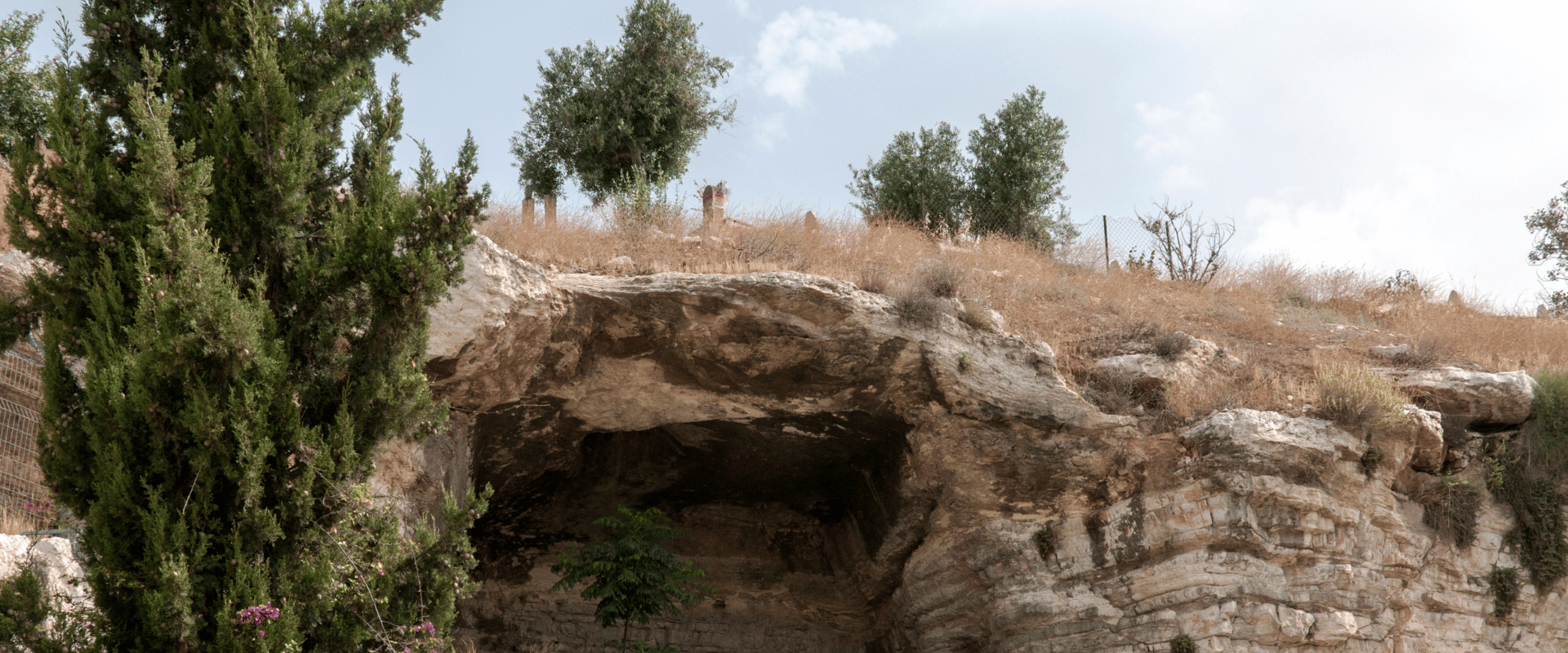
Conclusion
Since the crucifixion is one of the two most certain historical events from the life of Jesus (the other is his baptism by John the Baptist), scholars and Christians of all stripes have long sought the actual location of Jesus’ execution.
All four Gospels agree that the name of the site near Jerusalem was “Golgotha”, meaning skull. Fourth-century Latin translator Jerome translated this name to “Calvaria” or Calvary which means the same thing. No one knows why the place had this name although many have speculated that it might simply reflect the macabre nature of the site.
While the Gospels differ slightly on the details of the crucifixion story, they agree on several points. All four say Jesus was arrested in a garden, called Gethsemane in the Synoptics, near Jerusalem. He was then brought to trial, first in front of the Sanhedrin and then before Pontius Pilate, the representative authority of Rome in Judea.
In John, Pilate asks Jesus if he is indeed the “King of the Jews.” This may give us a clue to the reason Jesus was crucified. Anyone who claimed to have more authority than Rome (or was merely accused of doing so) risked execution.
In the 4th century CE, Helena, mother of Emperor Constantine, traveled to Jerusalem. Underneath a temple dedicated to Venus, she claimed to have found the True Cross of Jesus, believing this to be evidence that it was the site of Golgotha. This led to the construction of a church, dubbed the Church of the Holy Sepulchre, on the site. This church still exists today.
Scholars have long wondered if the site of this church is the true site of Golgotha, especially since it is inside the city walls which would not have been possible. However, archeologists have recently discovered evidence underneath the church, including ancient agriculture and a stone quarry, which prove that the site was outside the city walls in Jesus’ time.
Furthermore, two tombs from around the time of Jesus were found in the area, making it plausible that the Church of the Holy Sepulchre is both the site of Jesus’ death and his burial.
FREE COURSE!
WHY I AM NOT A CHRISTIAN
Raw, honest, and enlightening. Bart's story of why he deconverted from the Christian faith.
Over 6,000 enrolled!
